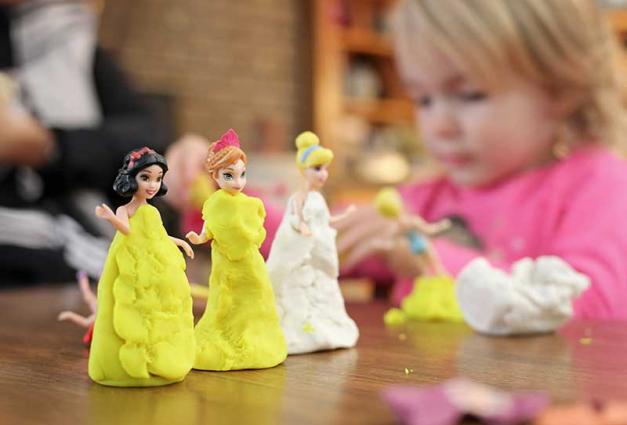Acquiring new knowledge about how the world works is central to development in children’s thinking. For years, researchers focused on the ways in which children take an active role in learning through first hand-experience. By actively engaging with the world around them, children learn that what goes up must come down, that eating certain foods can make them sick, and that things continue to exist even when they’re not in their immediate line of sight. However, there are limits to what can be learned through first-hand experience. History cannot be learned through first-hand experience. The existence of germs cannot be observed directly. Indeed, much of what we know about the world is passed on to us by other people.
Because other people are such a vital source of information for developing minds, it would be reasonable to expect that young children are not simply going around trusting everything they’re told. Rather, we expect that children would possess ways of selectively learning from good sources and judiciously distrusting bad sources of information. As the last two decades of research in child development have shown us, indeed children as young as 4 years (sometimes even younger) do not trust others randomly, but rather they exhibit systematic preferences that lead them to trust good sources of information.
For example, young children show systematic preferences to learn from familiar sources over unfamiliar sources. They also show preference to learn from native speakers of their primary language over non-native speakers. Children also show preference to learn from adults who have a track record of being correct about things (like calling a ball a ‘ball’) compared to adults who have a history of making mistakes (like calling a ball a ‘car’). These are just some examples of the ways in which children are careful and thoughtful about who they learn from.
What these studies have left unanswered is the question of how young children figure out when someone is a bad source of information whom they should not trust or learn from. As adults, we know that, sometimes, speakers may have an intention to deceive or provide misinformation. For this reason, we pay attention to cues that signal someone might be lying or trying to trick us. One such cue is known as nonverbal leakage, which refers to a speaker’s nonverbal behaviors that ‘give away’ the false message. This can occur in two distinct ways. Nonverbal leakage occurs when a speaker is unable to produce behaviors consistent with the lie, or when a speaker is unable to inhibit behaviors consistent with the truth. Adults often report using nonverbal leakage as a cue to deception, and it is reasonable to expect that young children would draw on similar cues to infer that a speaker might be untrustworthy.
To find out, I asked children between 4 and 6 years of age to watch a series of videos and use what they saw in the video to decide on the location of a hidden toy. In each video, an adult looked inside two separate boxes, one red and one blue. In the videos, the adult would display a dramatic expression of surprise and excitement upon looking inside one of the boxes, let’s say it was the red box, but would say out loud, ‘You should look in the blue box.’ Thus, the adult’s facial expressions were inconsistent with their words. To allow for comparison, I showed other videos in which the adult would look surprised and excited while looking in the red box and would say ‘You should look in the red box,’ which would be consistent because their words and actions matched. Each time, the child had to decide which box they thought had the toy. If, when the cues were inconsistent, children didn’t choose the box the adult said to look inside, it would show they were using the inconsistency between expressions and words as a sign of untrustworthiness, and they were inferring that the expressions were a better indication of the truth than the verbal statement.
When I looked at the results for the inconsistent trials, what I found were remarkable age differences in children’s decisions to look for the hidden toy. The oldest age group, the 6 year-olds, quickly picked up on the inconsistencies when the adult said one thing but behaved differently and would reliably choose to look for the toy in the box that elicited a nonverbal expression of excitement and surprise. They explained their decisions by referring to the adult’s expression, and sometimes even explicitly said the adult was lying or trying to be tricky. The 4 and 5 year-olds, on the other hand, almost always chose to look in the box the adult said to look in, disregarding the adult’s nonverbal expression. On occasion, some 5 year-olds appeared puzzled by the nonverbal expression and wondered what it could mean, but ultimately chose to trust what the speaker said about where to look for the toy.
This trend was very different from what I saw in the control videos, where the adults’ words and behaviors matched. In those trials, kids of all ages chose to look for the toy in the box that the adult had indicated (through both words and actions).
It appears that children are not indiscriminately trusting of other people. Instead, from a young age, at least by 6 years, children are using nonverbal cues in deciding who is telling them the truth.
For Further Reading
Harris, P. L., Koenig, M. A., Corriveau, K. H., & Jaswal, V. K. (2018). Cognitive foundations of learning from testimony. Annual Review of Psychology, 69, 251-273.
Mills, C. M. (2013). Knowing when to doubt: Developing a critical stance when learning from others. Developmental Psychology, 49(3), 404-418.
Sperber, D., Clément, F., Heintz, C., Mascaro, O., Mercier, H., Origgi, G., & Wilson, D. (2010). Epistemic vigilance. Mind & Language, 25(4), 359-393.
Maliki Eyvonne Ghossainy is a psychological scientist and statistician and currently Senior Research Scientist for the Developing Belief Network at Boston University. Her research integrates social, cognitive, cultural, and biological mechanisms into a model of belief formation across the early childhood years.




